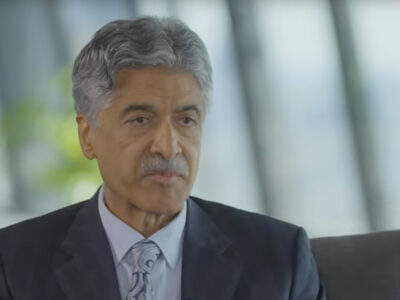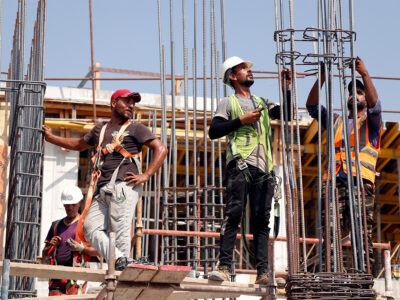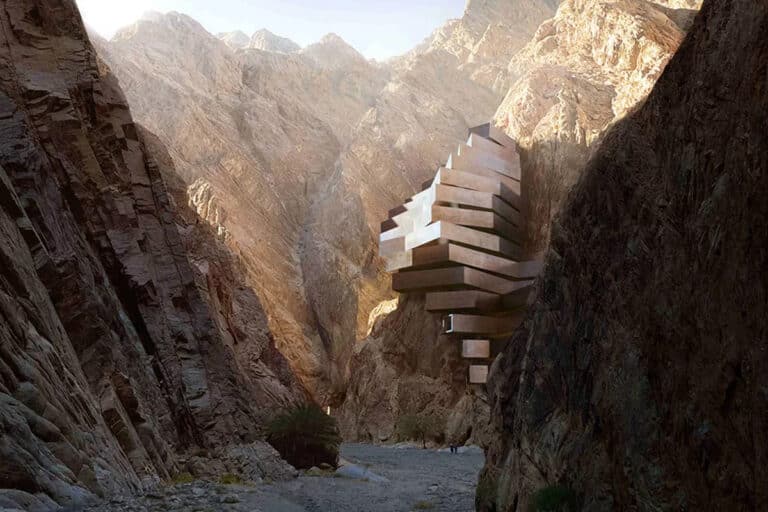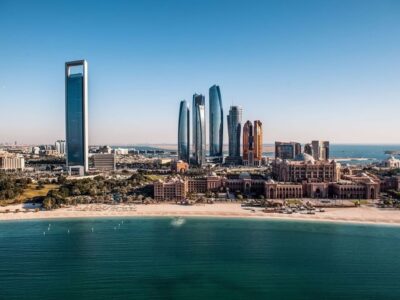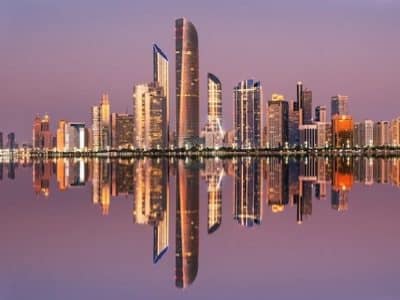Saudi Arabia has introduced plans to construct multiple large projects to transform the country into a global economic centre.
These programmes, which require investments in billions, aim to move the nation’s focus away from oil, create jobs, and establish Saudi Arabia as a hub for commerce and visitors.
Here are 19 upcoming major projects that will contribute to the kingdom’s transformation:
1. NEOM
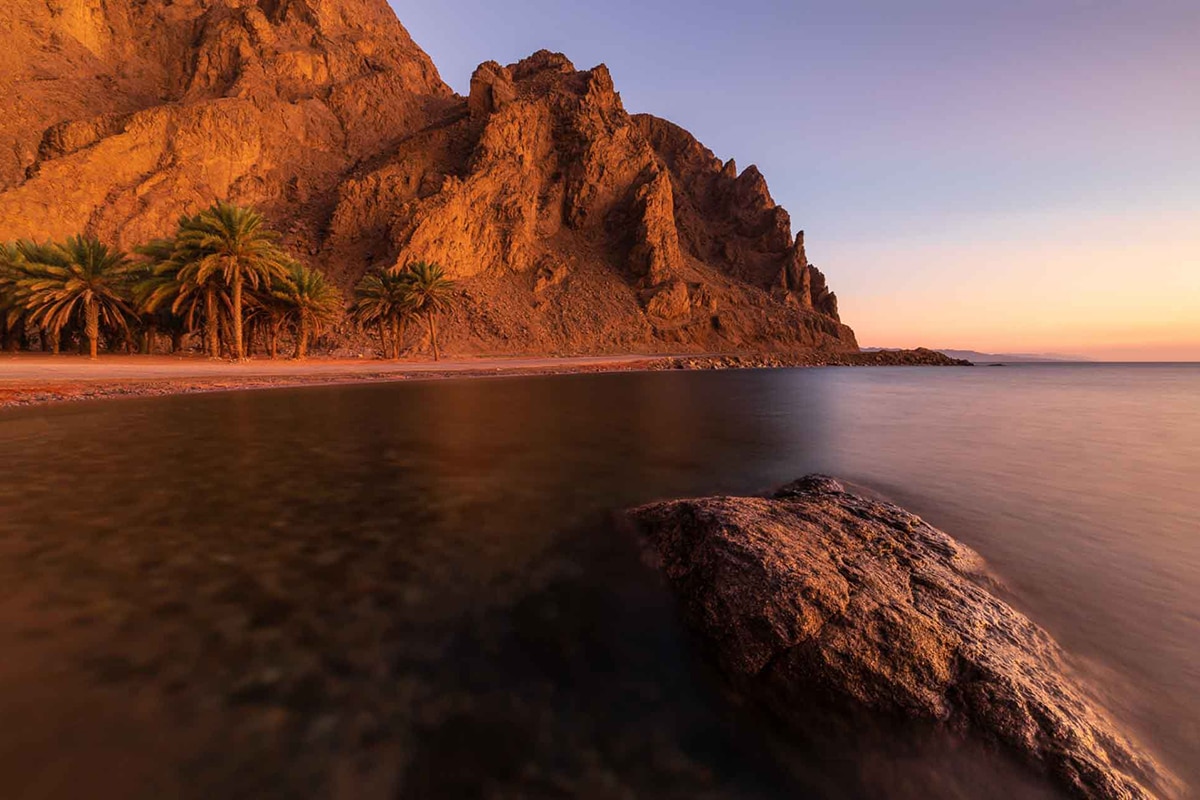
Situated along the Red Sea in Saudi Arabia’s northwest, NEOM is a $500 billion experimental city launched by Mohammed bin Salman bin Abdulaziz, Crown Prince and Prime Minister in 2017.
The project, which means ‘new future’, aims to attract visionaries and pioneers who seek to participate in creating a sustainable model for future communities.
Its strategic position on the Red Sea coastline offers key commercial advantages through access to global trade routes and markets. The development includes 26,500 square kilometres and is designed to operate entirely on renewable energy sources.
In alignment with Saudi Vision 2030, NEOM embraces a carbon-neutral, circular economic model. Its design principles focus on reducing urban spread while enhancing quality of life.
The project, funded by the kingdom’s Public Investment Fund (PIF) spans 14 different sectors, aiming to both diversify Saudi Arabia’s economy and develop solutions with global applications. The project will also be home to Magna, Oxagon, Sindalah, The Line and Trojena.
Magna

NEOM’s Magna is a luxury coastal destination along the Gulf of Aqaba near the Red Sea.
Part of NEOM’s regional sustainable tourism portfolio, Magna includes twelve destinations: Leyja, Epicon, Siranna, Utamo, Norlana, Aquellum, Zardun, Xaynor, Elanan, Gidori, Treyam, and Jaumur. The development spans 120 kilometres and integrates technology, architecture, and sustainability.
Magna will feature 15 luxury hotels, 1,600 hotel rooms, suites, and apartments, and over 2,500 premium residences. The destinations will focus on the conservation, preservation, and restoration of natural landscapes.
Aligned with Saudi Vision 2030, Magna aims to contribute to economic diversification by creating 15,000 jobs in tourism, leisure, and hospitality.
The development is expected to add SAR2.6 billion to Saudi Arabia’s GDP by 2030, accommodate 14,500 residents, and attract over 300,000 overnight visitors annually.
Oxagon
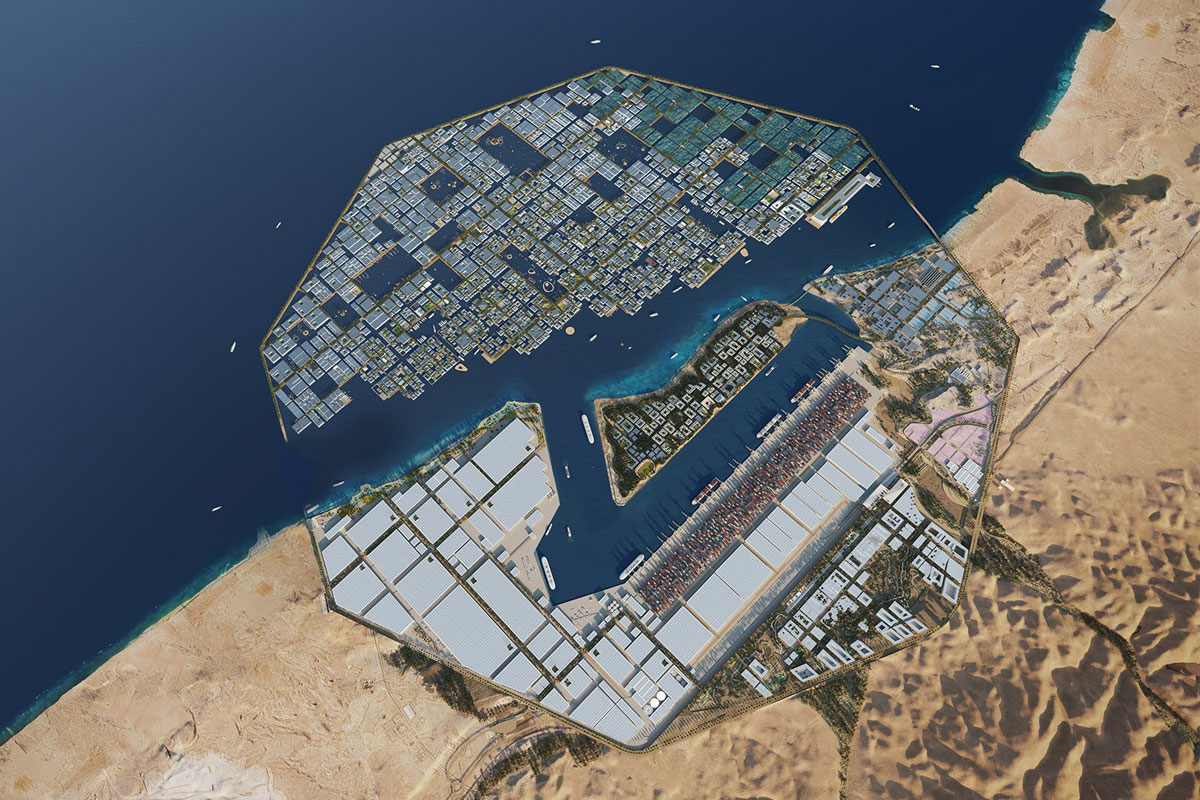
Oxagon, NEOM’s reimagined industrial city, will integrate Industry 4.0 with circular economy principles to establish a manufacturing ecosystem.
The city will use robotics, automation, artificial intelligence, and the Internet of Things, rather than retrofitting existing infrastructure, and aims to be powered by renewable energy, enabling manufacturers to operate efficiently and sustainably.
Located on the Red Sea coast near global shipping lanes, Oxagon provides a base for future factories.
The manufacturing ecosystem offers market access to NEOM’s developments and sectors. As a greenfield site, it provides renewable energy, an innovation hub, and smart city infrastructure for manufacturers to test and scale operations while meeting sustainability targets.
Oxagon Innovation Bay will serve as a hub for real-world testing, research, and development. It will provide a space for entrepreneurs, industry leaders, and research institutions to advance ideas from lab to market.
The Port of NEOM, positioned on global trade routes, is expanding its services, including cargo handling, ferry operations, and warehousing. Upon completion, it aims to be one of the most advanced and sustainable ports.
Oxagon’s residential communities will include a range of housing options, hospitality, retail, and mobility solutions. Oxagon Village will feature sports and wellness facilities, schools, and a health centre within a walkable public space.
Sindalah
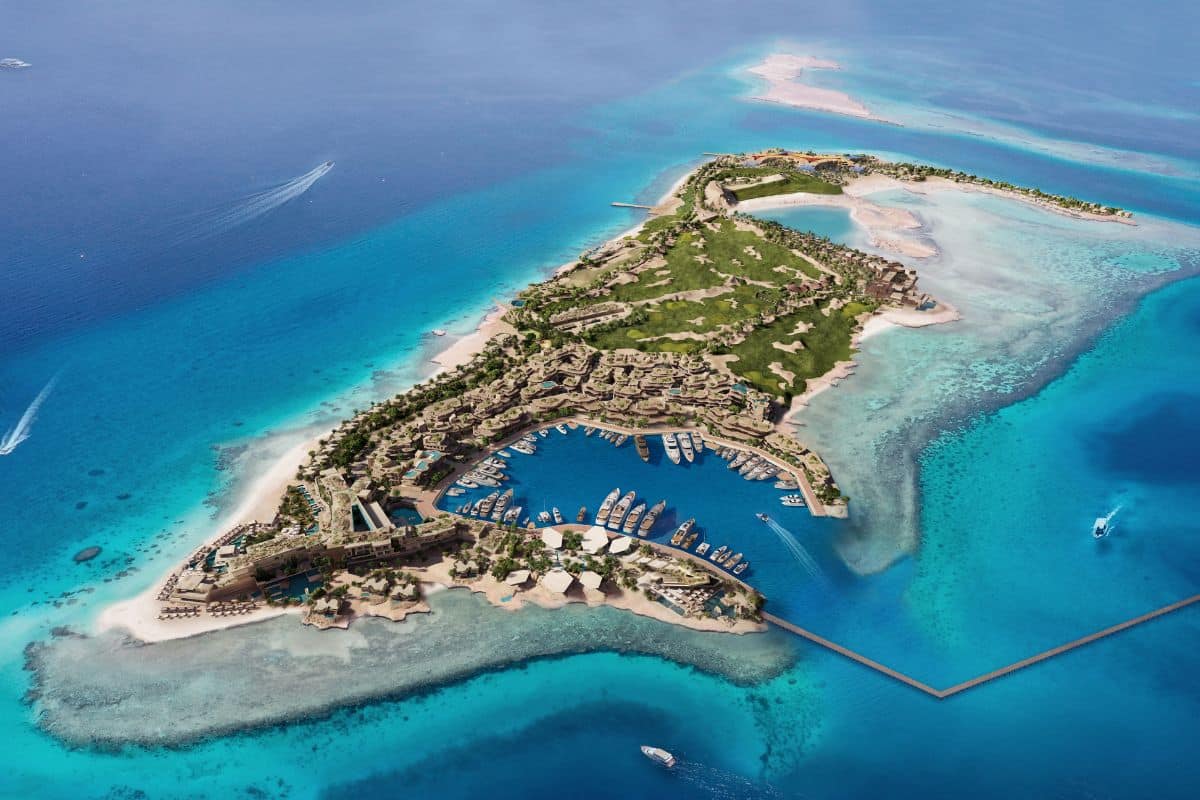
Sindalah has opened as NEOM’s first destination, welcoming its initial invited guests. The island covers 840,000 square metres and includes an 86-berth marina, catering to the global yachting community.
Located 17 hours by boat from Mediterranean yachting destinations, Sindalah serves as NEOM’s entry point in the Red Sea, providing access to its marina and 75 offshore buoys for superyachts.
Accommodation options include 440 rooms, 88 villas, and 218 serviced apartments. The island offers hospitality services, dining by chefs from Michelin-starred restaurants, and curated events.
Sindalah hosts cultural events, sporting activities, and social gatherings. Facilities include restaurants, retail outlets, and water-based experiences. Designed by LUCA DINI Design & Architecture, the island integrates natural surroundings with technology-driven design.
THE LINE

THE LINE is a 170-kilometre cognitive city extending from NEOM’s mountains through desert valleys to the Red Sea. It is a mirrored structure, 500 metres above sea level and 200 metres wide.
The city has no roads, cars, or emissions and will operate entirely on renewable energy, preserving 95 per cent of the land for nature.
“THE LINE will tackle the challenges facing humanity in urban life today and will shine a light on alternative ways to live. We cannot ignore the livability and environmental crises facing our world’s cities, and NEOM is at the forefront of delivering new and imaginative solutions to address these issues. NEOM is leading a team of the brightest minds in architecture, engineering and construction to make the idea of building upwards a reality,” Mohammed bin Salman, Crown Prince and Chairman of the NEOM Company Board of Directors said in a statement.
Designed for efficiency, THE LINE will accommodate nine million people within a 34-square-kilometre footprint.
Daily essentials will be accessible within a five-minute walk, and a high-speed rail system will enable end-to-end transit in 20 minutes. Open spaces, suspended on multiple levels, will provide immediate access to nature.
The city will operate with zero carbon emissions by eliminating roads and unnecessary infrastructure.
Renewable energy will power all industries, and open spaces will contribute to air quality, whereas, automated services will be powered by artificial intelligence, and the layout will encourage frequent social interactions.
Micro-climatic spaces will be created through controlled sunlight, shade, and natural ventilation. Green spaces will be integrated to enhance living and working conditions.
Trojena

Trojena is a planned destination within NEOM, located 50 kilometres from the Gulf of Aqaba in northwest Saudi Arabia.
Covering nearly 60 square kilometres, it sits at elevations ranging from 1,500 to 2,600 metres. The region experiences sub-zero temperatures in winter and maintains a cooler climate than the rest of the Gulf.
The destination will feature a ski resort offering outdoor skiing and adventure sports throughout the year. It will include over 30 kilometres of ski slopes, using a combination of real and artificial snow. Trojena will also house The Vault, a vertical village designed for visitors and residents.
Trojena’s transport network will connect it to The LINE, Oxagon, and NEOM Bay Airport. The region will include hotels, residential areas, and six clusters with various experiences, including leisure activities, concerts, an observatory, and a man-made freshwater lake.
The area will serve as a destination for adventure sports and a retreat for relaxation. The development will integrate advanced technology to support its operations and visitor experiences.
2. Qiddiya
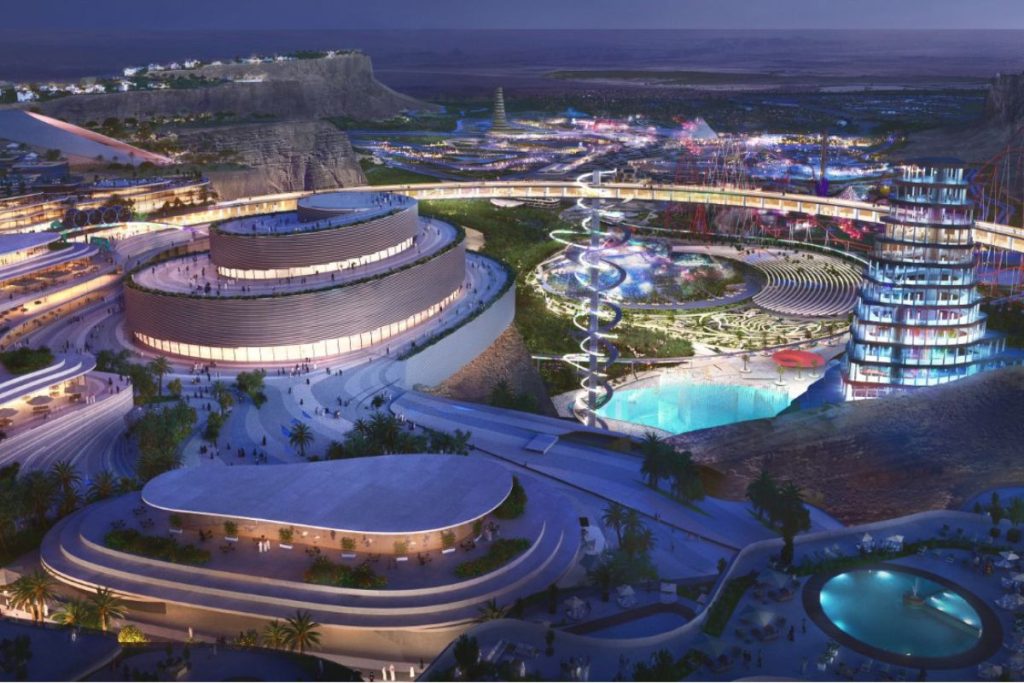
Qiddiya is a large-scale development southwest of Riyadh, spanning 376 square kilometres. It is being developed by the Qiddiya Investment Company, a subsidiary of the Public Investment Fund.
The project aims to establish a cultural, sports, and entertainment hub, contributing to Riyadh’s economic growth and quality of life.
The development will feature theme parks, sports arenas, entertainment venues, and outdoor activities.
Six Flags Qiddiya will include Falcon’s Flight, which is set to be the longest, tallest, and fastest roller coaster in the world. In 2022, a contract worth SAR2.8 billion was awarded for the construction of the country’s first water park.
Qiddiya is structured around five key areas: parks and attractions, sports and wellness, arts and culture, motion and mobility, and nature and environment. It aims to provide new recreational opportunities for Saudi residents while attracting international visitors.
3. The Red Sea Project
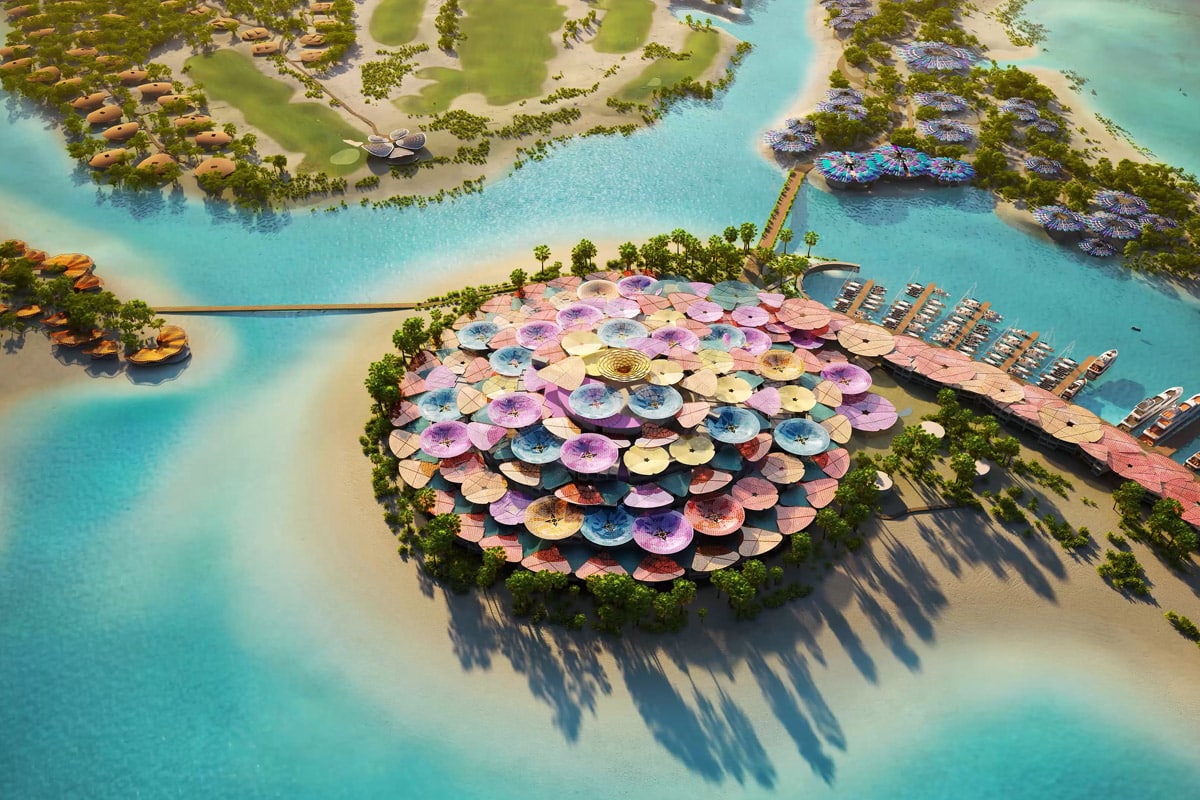
The Red Sea project is a converge, spanning 28,000 square kilometres, and includes an archipelago of more than 90 islands, beaches, and various natural features such as volcanoes, desert dunes, and mountain canyons.
The Red Sea project has opened its first five resorts as part of phase one, which includes an international airport and 16 resorts across three islands and two inland sites.
The resorts will open gradually throughout 2024 and 2025, providing around 3,000 keys operated by global hotel brands.
Upon completion in 2030, the development will feature 50 hotels with 8,000 rooms and over 1,000 residential properties across 22 islands and six inland sites. To protect the ecosystem, visitor numbers will be capped at one million per year.
Ummahat Islands

Ummahat Islands host two resorts: St. Regis Red Sea Resort and Nujuma, A Ritz-Carlton Reserve.
St. Regis Red Sea Resort opened in January 2024, offering 90 over-water and beachfront villas designed by Kengo Kuma.
Nujuma opened in May 2024, featuring 63 villas designed by Foster + Partners. Both resorts are accessible by a 30-minute seaplane flight from Red Sea International Airport (RSI) or a 30-minute drive followed by a one-hour boat ride.
St. Regis Red Sea Resort includes outdoor pools, a fitness centre, The St. Regis Spa, a Children’s Club, and fine dining options. The islands are surrounded by coral reefs, sandy beaches, and gardens.
The architectural design of St. Regis incorporates curved roofs and over-water villas with spiralled forms, reflecting the surrounding natural elements.
Red Sea International Airport (RSI)
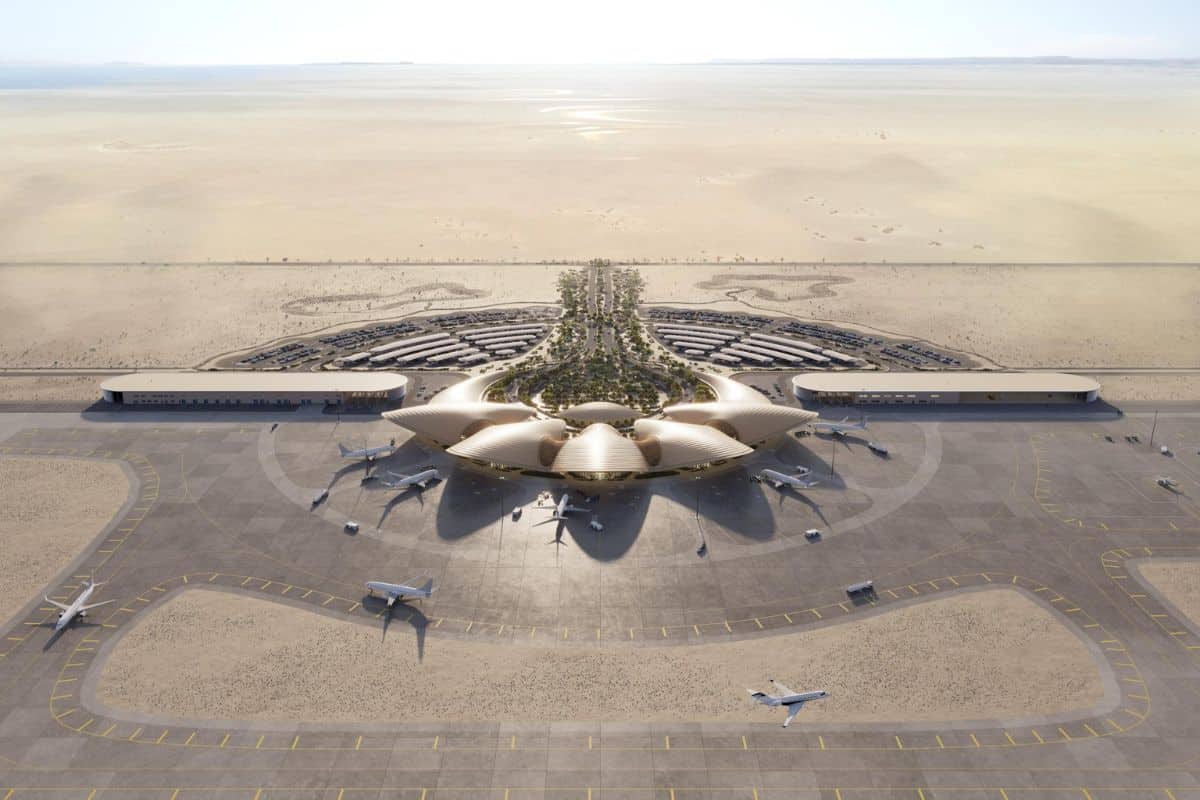
RSI opened in 2023 for domestic flights from Riyadh and Jeddah via Saudia and welcomed its first international flight from Dubai International Airport in 2024 via flydubai.
The airport, designed by Foster + Partners, incorporates natural ventilation and shade structures to reduce reliance on air conditioning.
RSI will handle one million tourists per year by 2030, with a peak capacity of 900 passengers per hour.
It will be carbon-neutral and powered entirely by renewable energy. Passengers currently have flight options from Riyadh, Jeddah, and Dubai, with additional routes to be added.
Landscape Nursery

The Landscape Nursery, covering over 1 million square meters, is the largest in the region and operates under a planet-first approach to sustainable development.
Operational since 2020, it has grown over 5 million plants for The Red Sea and AMAALA, with plans to grow 30 million by 2030.
The nursery features local plants and other vegetation, with new species introduced following evaluations for integration with existing flora and fauna.
Around 350 people work at the nursery, with 40 per cent being Saudis from the local community. The nursery receives 25 containers of plants daily and includes four shade houses, each 31,320m² in size, with varying levels of shading.
Turfgrass is grown for use in hotels, the championship golf course, and residential properties. The nursery has two to three growing seasons per year, where trees, shrubs, and plants are propagated, matured, and acclimatised.
A treatment plant supplements irrigation, while composting units process organic waste. Six water tanks, each with a capacity of 18,000m³, also support the nursery.
Desert Rock Resort
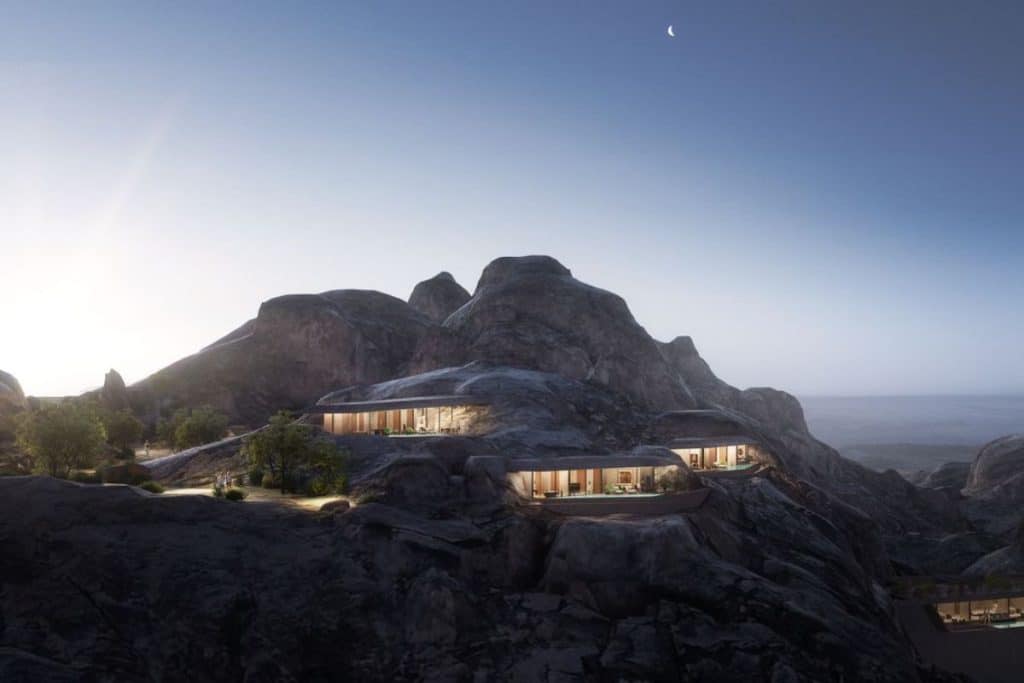
Desert Rock Resort is set within a hidden valley and surrounded by mountains. It is scheduled to open in 2024 as one of two inland resorts in phase one.
The resort offers 64 accommodations, comprising 54 villas and 10 suites, designed within the mountain to provide uninterrupted views of the desert landscape. Facilities include a spa, fitness centre, remote dining areas, and a lagoon.
Guests can engage in activities such as hiking, dune buggy rides, and stargazing. The architecture is designed to integrate with the natural surroundings and reduce energy consumption while supporting native flora regeneration.
Turtle Bay Village

Turtle Bay Village is a residential and commercial area housing workers, staff, and management at The Red Sea.
It currently accommodates 6,000 residents, with a planned total of 14,000. The development spans 1.5 million square metres, approximately three-quarters the size of Monaco. It includes a 144-room hotel, a corporate office for 500 people, restaurants, leisure facilities, and a hospital providing primary and secondary care.
The offices have 7,000 square metres of floor space, arranged in three independent campus-style elements. Buildings were constructed using off-site fabrication and modular techniques to enhance quality, safety, and environmental sustainability.
Turtle Bay’s villas and townhouses have achieved Platinum LEED certification, while Turtle Bay Hotel has received Green Key and Mostadam Diamond certifications.
Sheybarah Island

Shebara Resort, located on Sheybarah Island, is the first luxury resort fully owned and operated by Red Sea Global.
Now open, the resort features 73 villas, with 38 overwater and 35 beachfront accommodations. It is powered entirely by an on-site solar farm.
Facilities include five restaurants offering Mediterranean and Japanese-Nikkei cuisine, a fitness centre, a spa with five treatment rooms, and pools for families and adults.
The resort is accessible via a 30- to 40-minute boat ride or a 30-minute seaplane flight from RSI. A reef drop-off for diving is located 30 to 40 metres from the beach.
Designed by Killa Design, the resort’s over water villas are inspired by coral reefs, using stainless-steel materials that mirror the sea and sky.
The inland villas are designed to resemble desert sand dunes, ensuring privacy and integration with the landscape. The resort’s design reflects environmental considerations while offering a connection to the natural surroundings.
Shura Island

Shura Island serves as the central hub of The Red Sea and will feature 11 hotels opening in 2025. The island includes an 18-hole golf course, a yacht marina, lagoons, dunes, and beaches.
The hotel designs, known as Coral Bloom, were created by Foster + Partners to blend with the natural environment. The island is connected to the mainland by a 3.3km crossing, including a 1.2km bridge—the longest internal bridge in Saudi Arabia.
The surrounding archipelago is home to the world’s fourth-largest barrier reef system. The resorts will use lightweight materials with low thermal mass.
While sharing a master design concept, each resort will offer distinct accommodations and experiences, catering to different types of visitors, including honeymooners, families, adventure seekers, and wellness travellers. Landscaping has been designed to create new habitats and protect against erosion.
Six Senses Southern Dunes
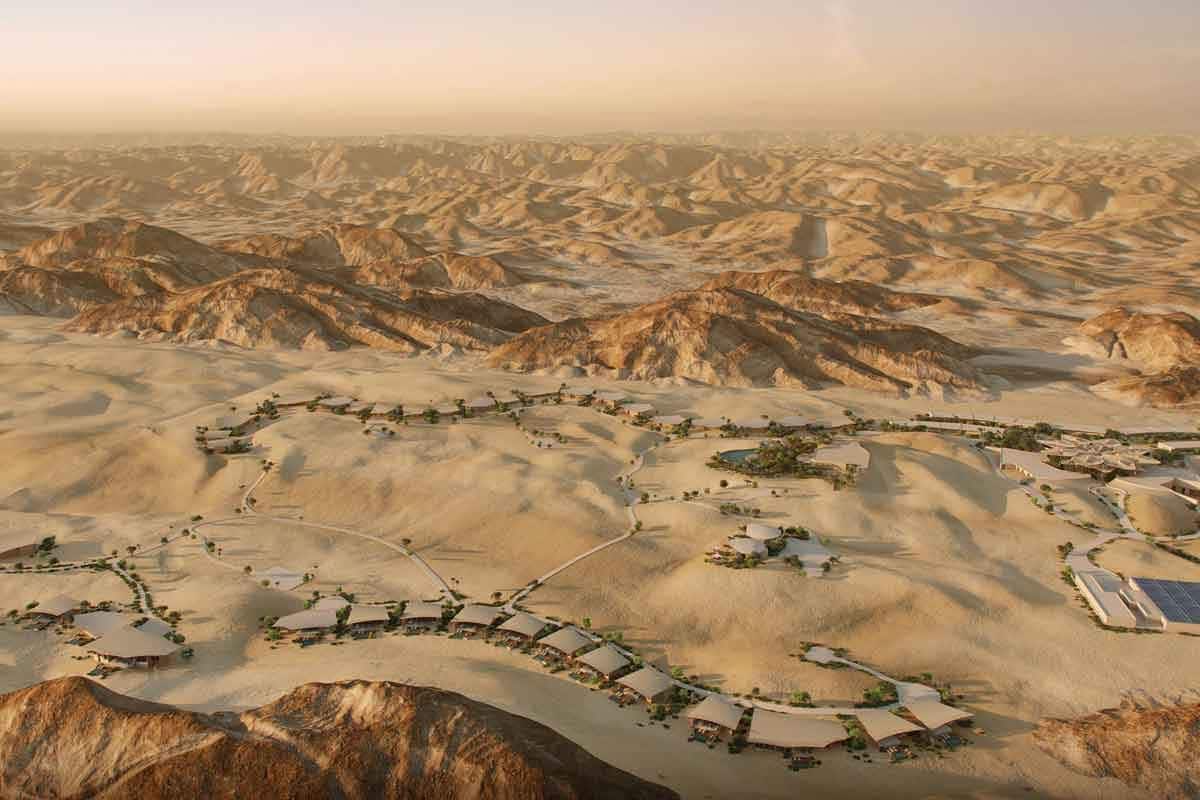
Six Senses Southern Dunes was the first resort to open at The Red Sea in 2023. It features 36 rooms and suites, along with 40 luxury villas arranged in two lines to complement the surrounding dunes.
Designed by Foster + Partners, the resort incorporates architectural elements reflecting the Nabataean heritage of the region. The central area, known as The Oasis, is inspired by a desert flower and serves as a multi-functional space.
Facilities include two restaurants, an outdoor pool, a fitness centre, and a Six Senses Spa. The resort was constructed using lightweight materials to reduce thermal mass and energy consumption, avoiding heavy materials such as stone or concrete. Fabrication took place off-site to streamline the construction process.
AMAALA

AMAALA is a luxury tourism destination being developed along the Red Sea coast in northwestern Saudi Arabia, covering 4,000 km².
It will offer a range of activities across the sea, sports, arts, and culture. The first phase focuses on the Triple Bay masterplan, providing 1,300 rooms across eight hotels, with the first opening in 2024.
By 2027, AMAALA will feature over 3,000 hotel rooms, 943 luxury residential villas, retail and food outlets, a yacht club, wellness and recreational facilities.
Sustainability is a priority, with only 5 per cent of the area used for development. AMAALA will operate on 100 per cent renewable energy, have a zero-carbon footprint, and produce no waste to landfills.
Thuwal

Red Sea Global’s Thuwal Private Retreat, an exclusive, buy-out-only island destination set to open next year.
Located on a 1.7-hectare islet in the Red Sea, the resort offers a main three-bedroom villa, three one-bedroom suites, a beach club, gym, and wellness center. Guests arrive via a private jetty and are greeted at a welcome center.
Thuwal is the first destination fully owned and operated by RSG, with no third-party operators involved.
The project combines luxury with sustainability, offering locally sourced gourmet meals and hiring from the local community.
The retreat caters to the demand for exclusive, customized experiences and offers activities like snorkeling and visits to nearby villages and Jeddah. RSG is also refurbishing Al Wajh Airport to improve connectivity and job opportunities.
4. ROSHN
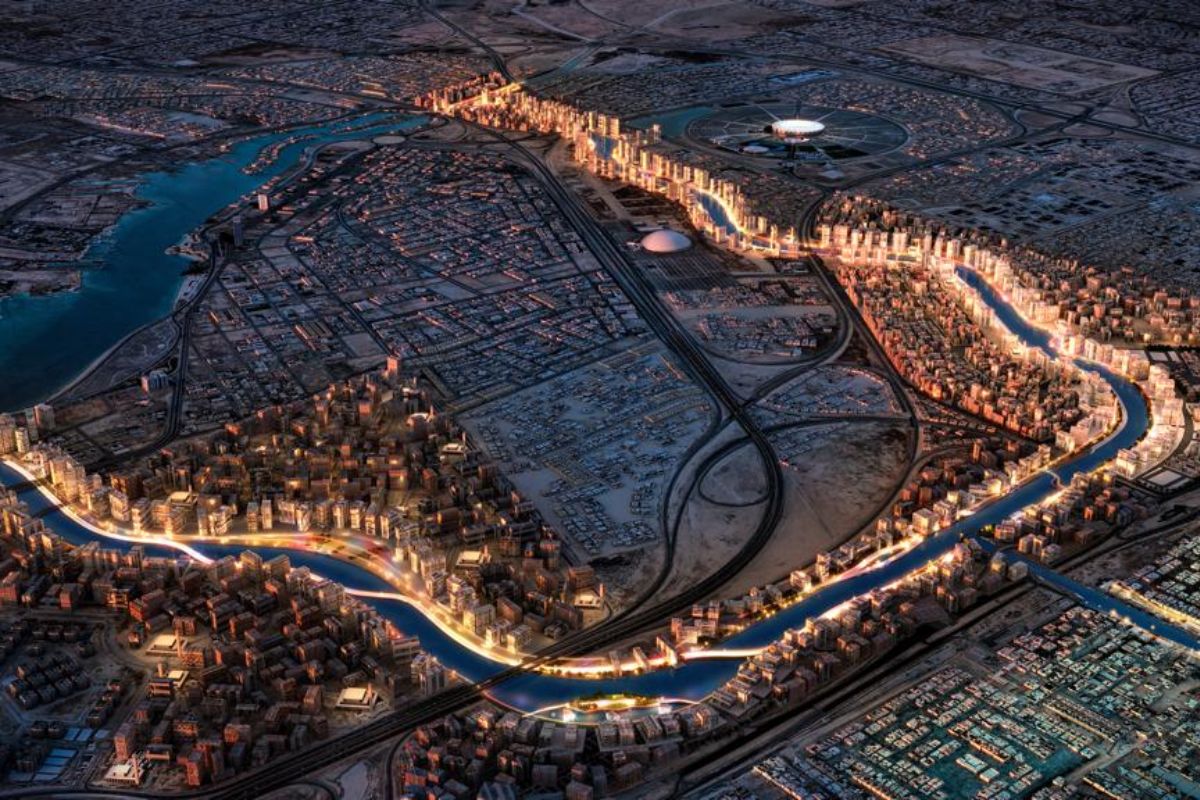
ROSHN, a national developer in Saudi Arabia, is reshaping urban living by creating energy-efficient, pedestrian-friendly communities that aim to improve the quality of life, enhance access to housing, and contribute to both housing needs and the country’s GDP.
With a land bank of over 200 million square metres, ROSHN supports the Vision 2030 goal of increasing homeownership in Saudi Arabia to 70 per cent by 2030.
The company plans to develop over 400,000 homes by 2030, alongside 1,000 kindergartens and schools, and more than 700 mosques. ROSHN’s projects are driven by technology, innovation, and sustainability.
The company’s core-assets include integrated residential and mixed-use communities, commercial complexes, office spaces, and hotels, while it also focuses on service assets such as educational facilities, mosques, and healthcare.
ROSHN’s extensive development plans reflect its commitment to transforming the urban landscape and providing attractive investment opportunities. Its communities include: Sedra, Alarous, Warefa, Almanar, Aldanah and Alfulwa.
5. Diriyah
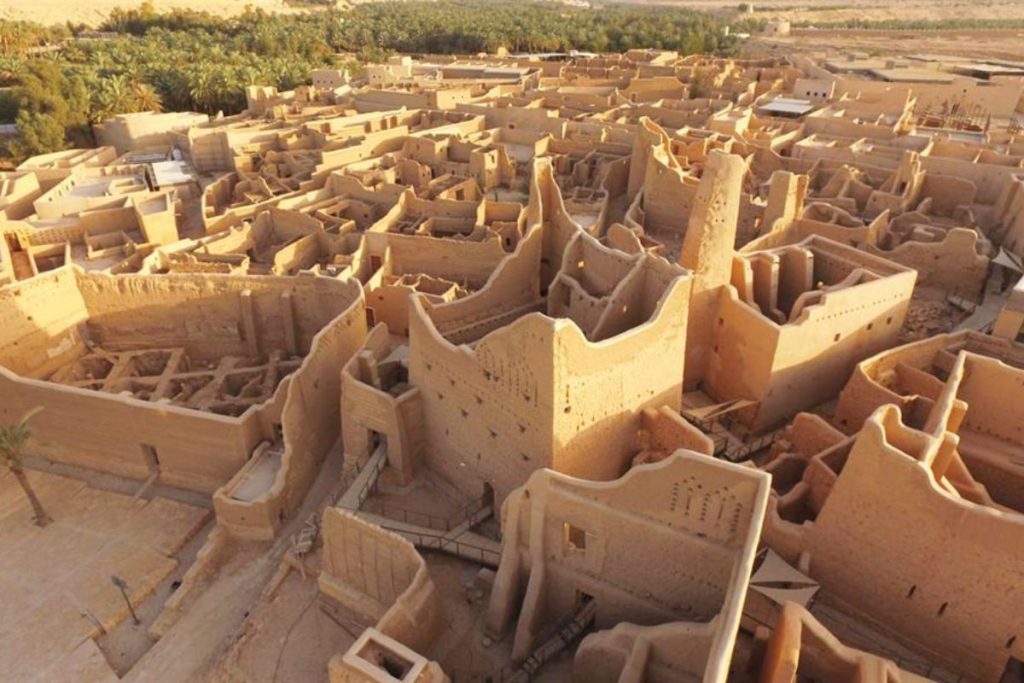
The Diriyah giga-project, covering 14 square kilometres, is set to become a globally significant destination by 2030. It will feature 38 hotels, over 100 restaurants, multiple educational institutions, and a population of 100,000, with an annual visitor count of 50 million.
Diriyah Company, established in 2022, is responsible for its development and is part of the Public Investment Fund. The project is centred around At-Turaif, a UNESCO World Heritage Site and the birthplace of modern-day Saudi Arabia. It aims to re-establish Diriyah as a major global cultural and historical landmark.
Diriyah is the ancestral home of the Al Saud royal family and the site where the First Saudi State was founded in 1727. The area has been home to generations of leaders and serves as an inspiration for many Saudis.
The development will include museums, cultural attractions, over 400 luxury brands, and more than 150 fine-dining restaurants and cafes. The Diriyah Company became a PIF giga-project in 2023, continuing to shape the area as a unique cultural, historical, and tourism destination.
6. New Murabba

New Murabba is a planned urban development in Riyadh, designed as a modern downtown integrating technology and Saudi Arabian cultural heritage. It will include residential, commercial, and recreational spaces, with 25 percentt of the site dedicated to green areas.
At the centre of New Murabba is The Mukaab, a large architectural structure featuring immersive digital experiences, retail, dining, and hospitality.
The project will provide 100,000 homes, including villas and apartments, with over 4.19 million square metres allocated to parks and plazas.
New Murabba will prioritise walkability, with homes located within a 15-minute walk of essential services. It will incorporate various transport options, including autonomous vehicles, metro services, and cycling paths. Smart traffic systems will be implemented to manage congestion efficiently.
The development will support sustainability through renewable energy, recycling, and waste management. AI-driven urban management systems will optimise city operations. The area will also serve as a hub for research, startups, and global businesses.
New Murabba will feature shopping, cultural attractions, and entertainment venues, alongside a stadium designed for sports and community events. AI-powered security and emergency response systems will be integrated to ensure safety and efficiency.
7. Jeddah Tower
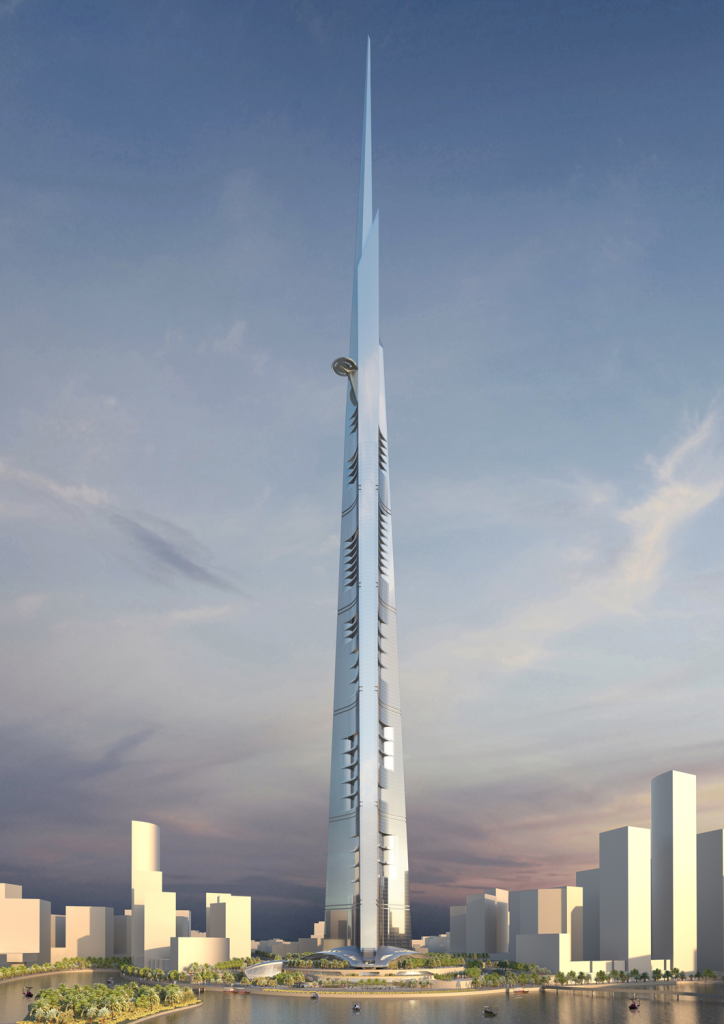
The Jeddah Economic Company has resumed construction on the Jeddah Tower project, which will exceed 1,000 metres in height, making it the tallest building in the world, surpassing Dubai’s Burj Khalifa by over 172 metres.
The JEC has begun the bidding process for contractors to complete the structure, with companies from Saudi Arabia, South Korea, China, and other countries invited to submit proposals, including potential joint ventures.
The Jeddah Tower will be the focal point of the Jeddah Economic City development, covering 1.5 square kilometres. The tower will feature luxury residential units, offices, hotels such as Four Seasons, and condominiums. It will also include amenities like shopping malls, restaurants, tennis courts, and the world’s highest observation deck.
8. SEVEN

Saudi Entertainment Ventures (SEVEN) is the investment and execution arm of the Public Investment Fund (PIF) in Saudi Arabia’s entertainment sector.
It operates as an investor, developer, and operator of entertainment projects across the country, facilitating the presence of both international and local brands.
SEVEN aims to lead the entertainment ecosystem in Saudi Arabia by expanding the sector and developing various projects over the next eight years. Its objective is to enhance the quality of life for Saudi nationals and residents by meeting their recreational needs.
Al Hamra

The Al Hamra Entertainment Destination in Riyadh, developed by SEVEN, spans over 90,000 square metres with a built-up area of 167,000 square metres.
The project features multiple entertainment zones, including the Transformers Experience with immersive rides, an indoor hubless wheel offering panoramic views, and Discovery Adventures, which integrates media content with indoor adventure activities.
Additional attractions include an indoor surfing experience in partnership with Flowhouse, Clip ‘n Climb climbing facilities, a 12-metre-high indoor skydiving tunnel, a competitive bowling venue with Avatar in-game features, and an e-karting track.
The destination also includes an AMC Cinema, a multi-purpose venue for live events and shows, and various dining options.
Tabuk

The Tabuk Entertainment Destination, developed by SEVEN, covers over 40,000 square metres with a built-up area of more than 72,000 square metres.
The project includes multiple entertainment zones, such as Discovery Adventures, which integrates media content with indoor adventure activities, and a Family Entertainment Centre featuring rides, arcade games, action zones, and virtual reality areas.
Other attractions include a bowling venue with Avatar in-game features, a 12-hole Adventure Golf course with integrated technology, and an AMC Cinema.
A Junior Family Entertainment Centre caters to children aged 3 to 9 with interactive games, soft play areas, and kiddie rides.
The destination also includes a multi-purpose venue for live events and shows and a Hot Wheels-branded e-karting track designed for guests of all ages.
Al Madinah
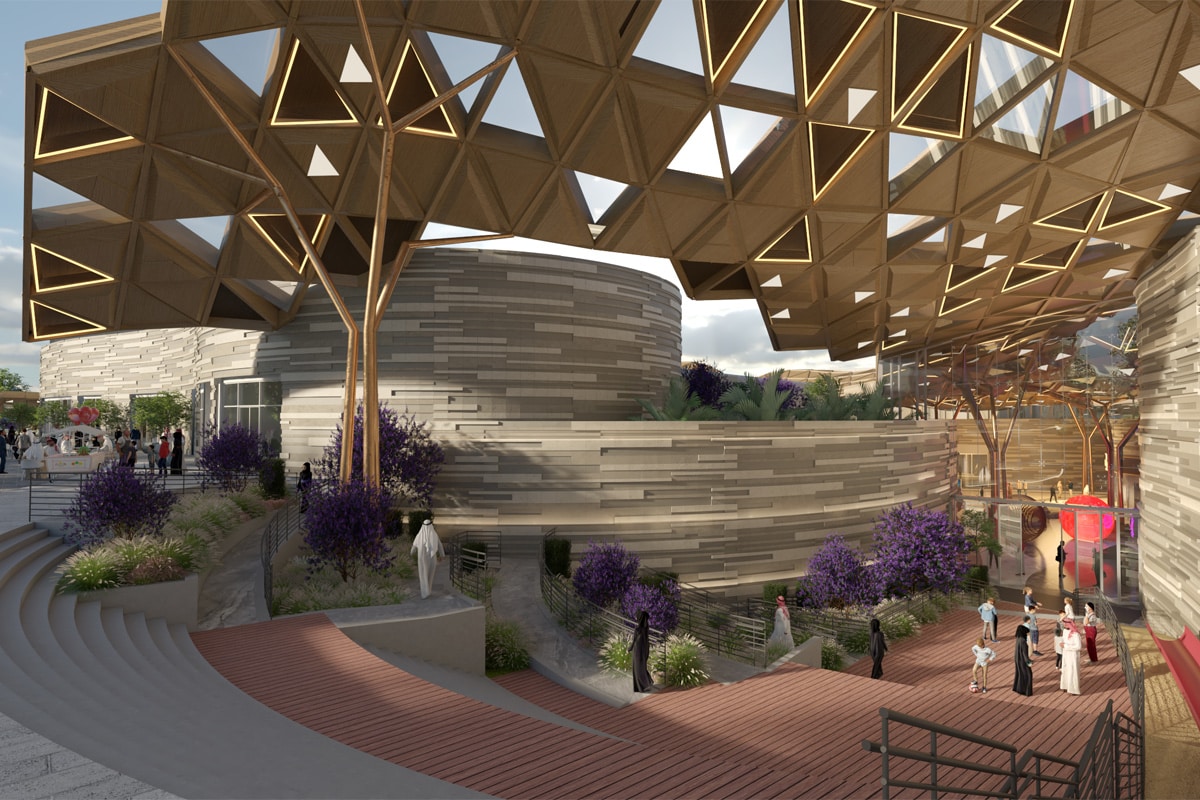
The Almadinah Entertainment Destination, developed by SEVEN, is located within King Fahad Central Park and covers a built-up area of 84,000 square metres.
The project features six entertainment zones, including a bowling venue with Avatar in-game features, Discovery Adventures integrating media content with indoor adventure activities, and a PLAY-DOH play area with multi-level playscapes and sensory discovery experiences.
The destination also includes an AMC Cinema, an e-karting track designed for all ages, and a Family Entertainment Centre with rides, arcade games, action zones, and virtual reality areas.
Yanbu
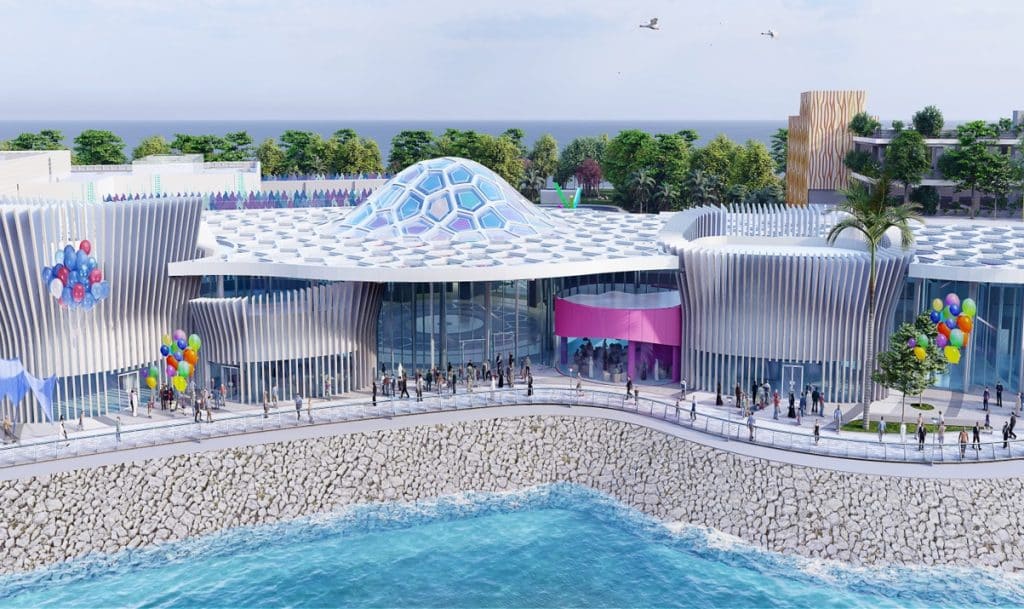
The Yanbu Entertainment Destination, located on Al-Nawras Island, spans over 36,000 square metres of land with a built-up area exceeding 62,000 square metres.
The project includes multiple entertainment zones, such as a Family Entertainment Centre with rides, arcades, action and adventure zones, and virtual reality areas.
It features an indoor adventure golf course with 12 holes, a Junior Family Entertainment Centre for children aged 3 to 9 with interactive games, and a Clip ‘n Climb facility for all ages.
Additional attractions include a bowling venue with Avatar in-game features and an AMC Cinema.
Abha

An entertainment destination is being developed in Abha on a land area of over 64,000 square metres with a built-up area exceeding 79,000 square metres.
The project features eight entertainment zones, along with food and beverage outlets and retail stores.
The zones include Discovery Adventures, an indoor adventure centre integrating Discovery’s media content, and a Family Entertainment Centre with rides, arcades, action and adventure zones, and virtual reality areas.
Other attractions include a bowling venue with Avatar in-game features, e-karting tracks, an AMC Cinema, and an indoor adventure golf course with 12 holes.
A multi-purpose venue will host events and live shows, while a Play-Doh zone will offer multi-level playscapes and sensory discovery for children.
Jazan

A new entertainment destination is being developed by SEVEN on Jazan’s northern corniche, covering a construction area of over 73,000 square metres.
The project includes various recreational spaces, local and international restaurants, cafes, and retail shops.
The entertainment zones feature the world’s first indoor Discovery Adventures centre, developed in partnership with Warner Bros Discovery, offering an edutainment experience with exploration and missions.
Hot Wheels E-Karting provides racing on specially designed tracks for all ages. The Family Entertainment Centre includes themed zones—Carnaval, Forest, and Swamp—with rides, arcades, and skill games.
Additional attractions include a bowling venue with Avatar in-game features, a 12-hole indoor adventure golf course, and a cinema. A multi-purpose venue will be available for events and live shows.
9. AlUla

AlUla is a historic site in Saudi Arabia with over 200,000 years of history, featuring sandstone outcrops, preserved tombs, and ancient developments.
It is home to Saudi Arabia’s first UNESCO World Heritage site, the Nabataean city of Hegra, as well as the Dadanite and Lihyanite Kingdoms and AlUla Old Town.
The Royal Commission for AlUla (RCU) is leading urban, economic, and heritage development initiatives while ensuring sustainability.
Efforts span archaeology, tourism, culture, education, and the arts to open the site to global visitors while preserving its natural and historical elements.
As part of Vision 2030, AlUla is positioned as a key destination for history, culture, and nature.
Nearby sites include Khaybar, a volcanic desert ecosystem, and Tayma, an archaeological site to the north.
10. King Salman Energy Park

King Salman Energy Park (SPARK) is an industrial hub in Eastern Saudi Arabia, established to connect global businesses to opportunities in the Saudi energy sector.
Inaugurated in 2018 by Crown Prince Mohammed bin Salman, SPARK provides a range of solutions to support energy-related businesses.
The development aims to diversify Saudi Arabia’s revenue streams and promote clean energy technologies. It will include a dedicated logistics zone and dry port to facilitate the movement of goods.
SPARK is the first industrial city globally to receive a silver Leadership in Energy and Environmental Design (LEED) certification for its sustainability efforts.
The project aligns with Vision 2030’s goal of diversifying the Kingdom’s energy sources.
11. King Salman Park

King Salman Park, launched in 2019 by King Salman bin Abdulaziz, is the largest urban park in the world and is located in the centre of Riyadh.
It offers a variety of activities, including arts, culture, sports, innovation, and entertainment. The park features open green spaces designed to host sports, cultural, artistic, and recreational events, as well as an Islamic-style garden, vertical gardens, a maze garden, and a bird and butterfly sanctuary.
The development focuses on sustainability and environmental protection, with objectives to increase vegetation and expand per capita green spaces.
The project aligns with Vision 2030’s goal of enhancing Saudi cities as tourism and residential destinations.
12. Riyadh Sports Boulevard
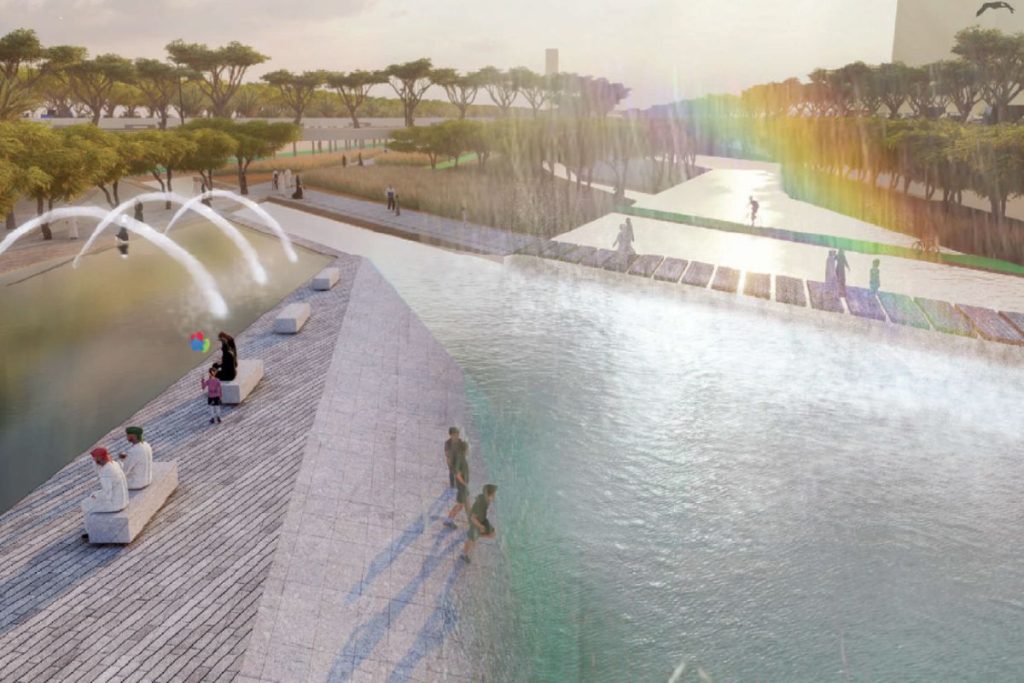
The Sports Boulevard, launched on March 19, 2019 by King Salman bin Abdulaziz, is a mega project in Riyadh aimed at promoting a healthy lifestyle through activities such as walking, cycling, and horse riding.
The project provides events and activities to create a cultural and recreational atmosphere. It extends over 135 km, connecting Wadi Hanifa in the west to Wadi Al-Sulai in the east via Prince Mohammed bin Salman Road.
The boulevard features pathways for pedestrians, cyclists, and horse riders, as well as other sports facilities.
The project aligns with Saudi Vision 2030’s Quality-of-Life objective by enhancing Riyadh as a modern, livable city.
13. Jeddah Central

The Jeddah Central Project, launched in 2021 by Crown Prince Mohammed bin Salman, aims to make Jeddah a world-class destination while preserving its heritage.
The $19.9bn+ project will develop 5.7 million square meters and features landmarks such as an Opera House, Museum, Sports Stadium, Oceanarium, marina, beach resorts, restaurants, cafes, shopping areas, and residential zones.
The development will be completed in three phases, with the first phase, covering 45 percent of the project, expected to finish by the end of 2027.
This phase will include the Opera House, Stadium, Oceanarium, public beach, and other attractions.
The second phase, due by 2030, will focus on economic, cultural, and entertainment development.
14. Rua Al Madinah

The Rua Al Madinah Project, in alignment with Saudi Vision 2030, aims to enhance the lifestyle and spiritual atmosphere for visitors to Al-Madinah Al-Munawarah.
The project focuses on improving accommodation near the Prophet’s Mosque, offering top-tier hospitality, and enhancing the quality of life and well-being of visitors.
Its design is inspired by the city’s heritage, highlighting its religious, cultural, and historical importance.
The project also aims to create tens of thousands of job opportunities for local residents, prioritising Saudi talent. It includes integrated hospitality projects, cultural centres, retail stores, and green spaces.
The project will provide easy access to the Prophet’s Mosque with comprehensive transport solutions and pedestrian pathways. It offers a direct view of the mosque’s eastern expansion and includes wide walkways connecting the hotel buildings to the mosque.
15. Soudah Peaks

Soudah Peaks, located 3,015 meters above sea level, is a luxury mountain tourism destination in Saudi Arabia, spanning 627 km² across Soudah and parts of Rijal Almaa.
The project aims to attract over 2 million visitors annually by 2030 and create 1,000+ jobs by 2033, contributing $7.8 billion to the Kingdom’s GDP by 2033.
The development will include six zones–Red Rock, Tahlal, Sahab, Sabrah, Jareen, Rijal–with 2,700 hospitality keys and 1,336 residential units. It will feature over 30 attractions, including adventure activities, wellness retreats, and cultural experiences.
Soudah Peaks will celebrate local architecture and heritage, placing sustainability at the core of its design to protect the environment, wildlife, and cultural sites.
Activities will include hiking, paragliding, horseback riding, rock climbing, nature exploration, and wellness offerings such as spa resorts and meditation centres.
The project will also highlight local culture through folk music, art, and traditional products.
16. Masar Destination

The Masar urban development project was launched in Makkah, Saudi Arabia. The first phase focuses on road infrastructure, with plans to expand into retail, hotel, and residential sectors in later phases.
The project is owned by Umm Alqura for Development and Construction (UAQ), with investors including the Public Investment Fund (PIF), Ministry of Finance, and the Public Pension Agency.
King Abdulaziz Road is the core of the development, with a 3,650-metre pedestrian route separating the two directions of the main vehicle route.
Other transportation routes, including the Bus Rapid Transit Network and Makkah Metro, are also part of the plan. The project will cater to 80 percent of Makkah’s visitors and 60 percent of vehicles arriving from Jeddah.
The development will include retail, commercial, cultural, and government centres, and “tens of thousands” of hotel and residential units. International hotels such as Kempinski, Hilton Garden Inn, and Taj are part of the first phase, expected to be completed in 2023.
The project aligns with Saudi Vision 2030, aiming to increase Umrah pilgrims to 30 million by 2030 and enhance the quality of life for Makkah’s residents and visitors.
17. THE RIG.
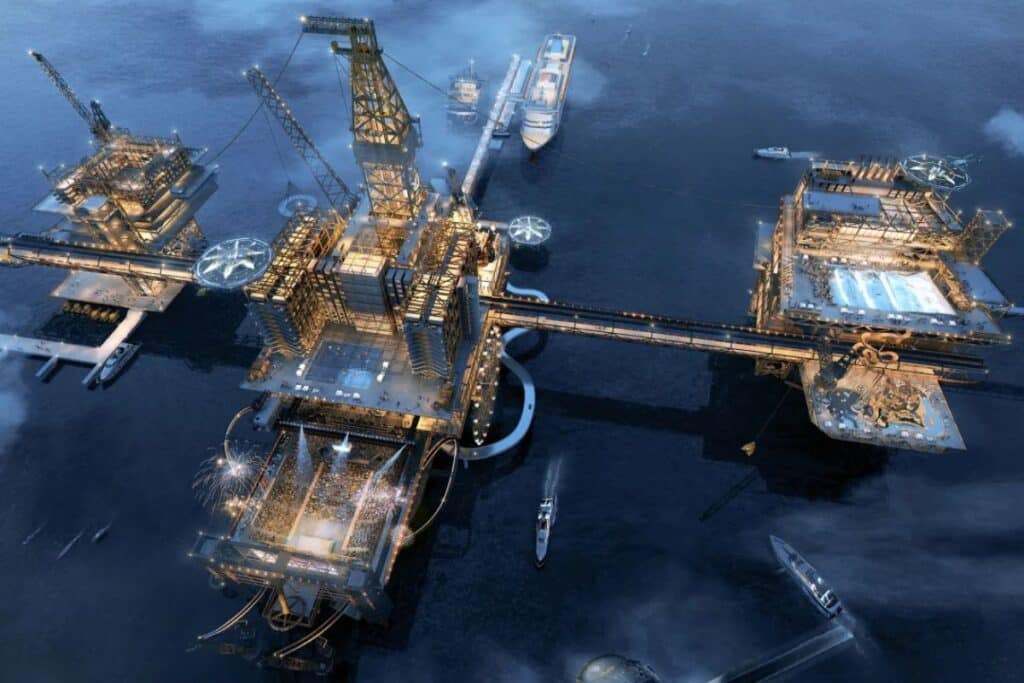
THE RIG. is an adventure tourism destination located on an offshore platform in the Arabian Gulf.
Announced in 2021, it is the world’s first adventure tourism project of its kind, inspired by offshore oil platform designs.
The project is led by Oil Park Development Company (OPDC), in alignment with the Public Investment Fund’s Strategy 2021-2025. THE RIG. aims to diversify and enhance Saudi Arabia’s tourism and entertainment offerings, increase investment in the sector, and contribute to the economy.
It will also provide employment opportunities in the Eastern Region. Environmental protection is a key priority in the development, which adheres to international standards.
Spanning over 300,000 square metres, THE RIG. is located 40 km off the coastline, near Juraid Island and the Berri Oil Field.
The project will feature three hotels, 11 restaurants, retail shops, and a variety of activities and adventures both above and below the sea.
18. Mohammed Bin Salman Nonprofit City

Mohammed Bin Salman Nonprofit City, also known as Misk City, is the first nonprofit city designed to host the ecosystem of the Mohammed bin Salman Foundation (Misk).
The city aims to create a vibrant, human-centric environment focused on youth, where young and creative individuals can live, learn, share, and progress.
Misk City is designed to contribute to the growth and development of Saudi youth, aligning with the goals of Misk Foundation.
The city will feature offices, educational institutions, arts and sports facilities, entertainment options, residential areas, and hotels, creating a comprehensive living and creative environment.
Misk City’s establishment builds on the legacy of Misk Foundation, which has empowered youth through various programs, initiatives, incubation, workshops, events, and networking for over 13 years.
19. King Abdullah International Gardens
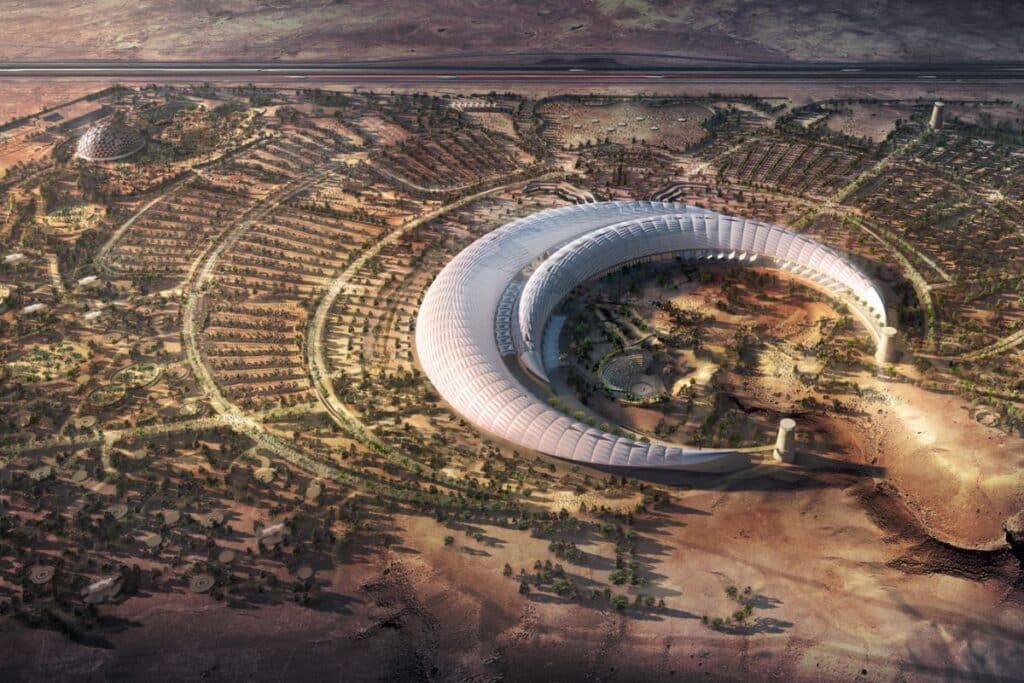
The King Abdullah International Gardens are designed to become a global centre for the study of climate change, showcasing ecotopes from history and the present day.
Located in the Saudi Central Region, the gardens will re-create the 400 million-year history of plant evolution.
The project, set to open in autumn 2025, aims to be the largest temperature-controlled botanical gardens in the world, spanning 10 hectares within crescent-shaped biomes.
The gardens will highlight the environmental changes that have shaped the region, illustrating the natural cycles and the impact of climate change.
The initiative aims to raise awareness about the relationship between humanity and the environment, promoting education on climate issues.
